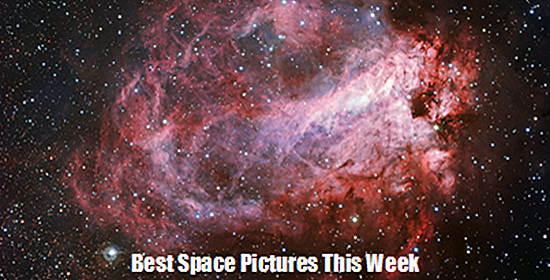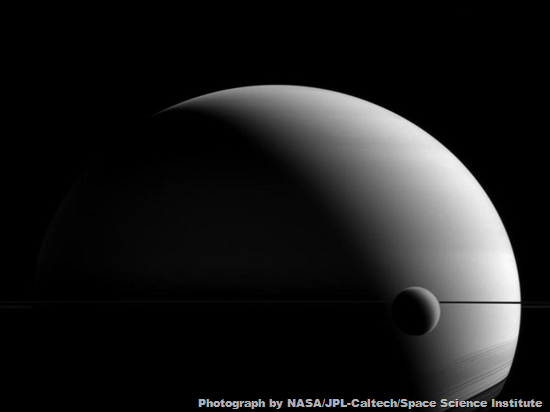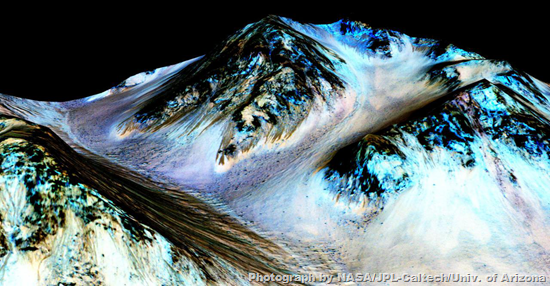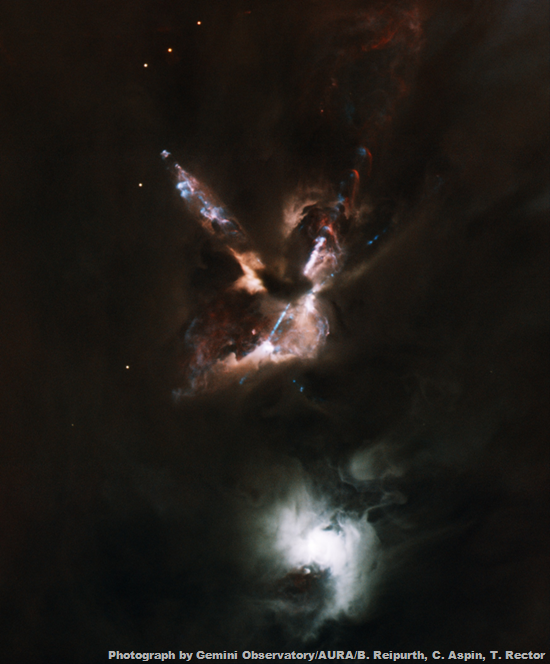
Week's Best Space Pictures: A Blood Moon Rises and Stars are Born
By Rachel A. Becker, National Geographic News, 2 October 2015.
By Rachel A. Becker, National Geographic News, 2 October 2015.
Feed your need for heavenly views of the universe with our pick of the most awe-inspiring space pictures. This week, Titan and Saturn show their fuzzy faces, signs of liquid water streak down Martian slopes, and a super blood moon looms over the Washington Monument.
1. Hazy View
Saturn and its moon Titan are similarly veiled in haze in this image snapped by the Cassini spacecraft from 1.4 million miles away. But the two couldn’t be more different. Saturn is all gas; Titan’s gaseous atmosphere coats a solid, icy body.
2. Water on Mars
Scientists think that these long dark streaks on the Martian slopes of Hale Crater are evidence for liquid water on Mars. This picture was generated by draping a false colour image over a 3D computer-generated map.
3. Phoenix Rising
New X-ray, optical, and UV-wavelength observations of the Phoenix galaxy cluster reveal massive filaments of gas and dust surrounding giant holes in the cluster’s hot gas - these might play a role in the cluster’s extreme star formation.
4. Super Blood Moon
The super blood moon hovers over the Washington Monument during Sunday’s total lunar eclipse. The moon’s reddish hue comes from the Earth’s shadow, cast during the eclipse - and it looks so large because this is the closest the moon gets to Earth all year.
5. Starburst
The Gemini Observatory captured the light show that goes on as stars are born. In this stellar nursery, supersonic gas jets shoot from a dense cloud core.
6. Surface Map
This flattened map of dwarf planet Ceres was generated from images taken by NASA’s Dawn spacecraft. Areas shown in red reflect infrared light, blue areas reflect short wavelengths, and green areas are bright in general.
7. Rosy Glow
This pinkish cloud is the star-forming region of the Omega Nebula, or Messier 17, captured in detail by a telescope at the La Silla Observatory in Chile.







No comments:
Post a Comment
Please adhere to proper blog etiquette when posting your comments. This blog owner will exercise his absolution discretion in allowing or rejecting any comments that are deemed seditious, defamatory, libelous, racist, vulgar, insulting, and other remarks that exhibit similar characteristics. If you insist on using anonymous comments, please write your name or other IDs at the end of your message.